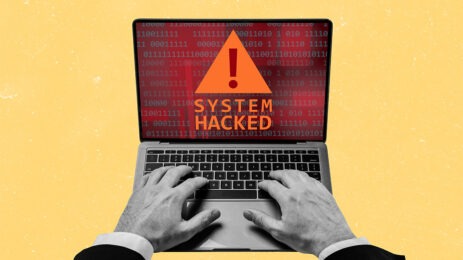How fluent are you in the language of audiovisual? It can be daunting for a host of reasons: the equipment, esoteric terminology, cost, lack of how-to knowledge. In the latest Smart Meetings Accelerator, “Technically Speaking: How to Talk AV,” Michael Granek, CSEP, president and chief operating officer of Event Leadership Institute, led a tour through the vivid and vital world of audiovisual.
Even for the AV adverse, Granek believes understanding begins with a simple mindset shift. “It’s really important to learn the language so that you can speak in the common language of your technical providers,” he says. “Now, you don’t have to learn how to do this stuff. Just having a basic sense of what they’re talking about will help reduce your stress as a planner.”
AV May Be Bigger Than You Think
“Often people think projectors, microphone, speakers and lighting, but there’s a lot more there,” Granek says. AV covers a vast array of tools to make your event a success. In addition to the obvious, the list can also include sound, screens, video, staging, slides, Wi-Fi, audience responses and more.
The audiovisual landscape is changing as well, Granek notes. Apps used for audience response are a prime example.
Granek says he’s come across planners who question the need for using AV help at their events or meetings. “Even if we’re talking about just a little group meeting, there’s often some component of audiovisual that’s required,” he says. In most scenarios, involving use of presentations, music, any form of entertainment, stage shows or video recording, audiovisual assistance is almost always necessary.
It’s time to cue the Q&A.
What are hidden costs planners should be aware of when negotiating audiovisual contracts?
A very easy one is labor costs, as they can be a little tricky. Let’s say you have multiple bids for AV, and someone is a lot less expensive than the others. They risk is that they might turn around and say that it’s estimated labor only, and they might not be estimating accurately.
I would ask [AV bidders] to overestimate the labor. I would rather go to my client and say, “Hey, we saved x dollars on the labor.” That way, I don’t have to go back to my client and surprise them with an additional cost. If that’s not possible, it’s very important that you stay transparent with your client and say, “This is estimated labor only. The price may go up.”
Should you ask how new the equipment is and negotiate on that?
You could always ask, but it’s not as important as how well it’s maintained. Ask to visit your audiovisual supplier’s offices and take a tour of their warehouse. If everything is well organized and tidy, there’s a good chance that all equipment is well maintained and also that they are organized in the delivery of their events, as well. I don’t feel that this should be a form of leverage in negotiation, but it’s a point for you to note when selecting suppliers. You probably wouldn’t want to hire a disorganized, messy supplier anyway, so there’s really no point in trying to negotiate on that point.
Does the front-of-house (FOH) area generate any noise? Should I account for chatter between techs or buttons clicking or general movement at this desk?
Yes and no. If you have audience seats right up against the FOH tables, it is possible that people sitting nearby will hear cues being called into the crew’s headsets. However, most experienced AV techs do recognize that this can be distracting and will do their best to keep sounds to a minimum. The best thing to do is coordinate the best position for FOH with your AV supplier, and if it’s necessary to be close to the audience, simply remind the crew to keep their chatter to a minimum and be mindful of people nearby. Another solution would be to put the FOH position on tall risers above the audience. This way the last row in the audience isn’t in direct earshot.
What is the recommended distance for setting the first table in front of a screen? What about the farthest table?
This is entirely dependent on the size of the screen and the type of projector being used. Different projectors have different lenses, and there are even fish-eye lenses that are used for short-throw situations, which means that they can be much closer to the screen. The best thing to do is speak with your AV supplier about where you’d ideally like to position the screen and projector in your floor plan, then and ask what equipment would be appropriate for the situation and size of the room and audience.
What can you do to minimize “lights in the eyes” from a lighting tree?
If lights are getting in the eyes of your performers or speakers on stage, or the guests in the audience, it’s likely they are just not positioned high enough. Speak with your AV or lighting supplier and ask them about bringing appropriate equipment, such as tall ground-supported stands or rigging lighting to the venue’s ceiling. They should be able to recommend the best solution for your situation and the venue.
Do lumens matter with projectors anymore?
Most definitely. Lumen is the measure of brightness of the projector, so the brighter the projector, the less chance the image will get washed out by ambient or stage lighting in the room. There are a few factors when trying to determine how many lumens would be appropriate. For example, the size of the room, how much ambient or daylight there will be, how large the screen needs to be for your audience size, and so on. Your audiovisual supplier should be able to recommend the best equipment for your situation. Remember, there is no one-size-fits-all approach to projectors, so your budget might need to be adjusted based on the specs of your event.
An AV check is done prior to meeting and then as soon as the meetings starts, but glitches still occur. The pressure is on, attendees are starting at you and the sweat beads up on your forehead. Why is this so common?
Unfortunately, this does happen every so often and comes with the challenges of using technology. It can happen to even the most prepared and experienced AV suppliers. However, this is where proper rehearsals are vitally important. Allocating sufficient time to find these glitches ahead of time and letting presenters practice will save you some sweat. Also, experienced AV companies and technicians should be able to anticipate a lot of common problems and come up with back-up solutions or recommendations on how to avoid or reduce them. If you are encountering these issues repeatedly at every event, you may want to consider sourcing a different supplier. However, that is still no guarantee you won’t experience glitches.
What are ways to minimize feedback when the house sound comes through speakers in the ceiling, not powered speakers?
House sound speakers built into ceilings are not the best option if you are using microphones. However, if you absolutely need to use them, it’s often good practice to get an audiovisual tech to stay in the room to monitor and adjust audio levels during the event. In terms of equipment, your AV supplier should be able to recommend additional equipment that could help, such as a small mixer and/or equalizer to reduce the problem sound frequencies that contribute to feedback. Selecting appropriate microphones for the space is also important. Lavalier mics can be problematic, depending on the location of the ceiling speakers and also the height of the ceiling—especially if you have a stage that brings your presenters closer to the ceiling speakers. Another consideration is making sure that your presenters are not speaking directly underneath a speaker, or if they are walking around the room, that they are aware of where the problem areas are.
How are audiovisual companies supporting organizations’ virtual and hybrid meetings in the current pandemic?
In many ways. I’ve heard from companies that are setting up Wi-Fi and virtual studios for CEOs and executives in their homes, so they can deliver meetings, webinars and other calls. Some have put together webcasting packages to send to virtual event speakers, such as a green screen, lighting and appropriate microphones. Others are providing support on the software front and helping with technical support getting online events going. It really depends on the AV company’s expertise, but the best thing to do is reach out to your supplier to see where they can help.




